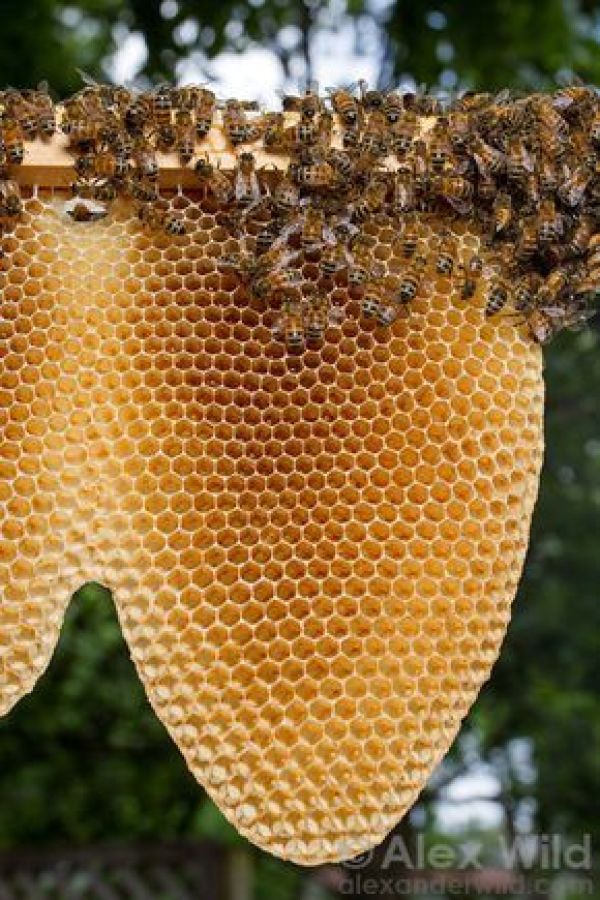A honeycomb is a mass of hexagonal wax cells built by honey bees in their nests to contain their larvae and store honey and pollen.
Honey bees consume about 8.4 lb of honey to secrete 1 lb of wax so the wax is returned to the hive after harvesting the honey. The structure of the comb may be left basically intact when honey is extracted from it by uncapping and spinning in a centrifugal machine—the honey extractor. If the honeycomb is too worn out, the wax can be reused in a number of ways, including making sheets of comb foundation with hexagonal pattern. Such foundation sheets allow the bees to build the comb with less effort, and the hexagonal pattern of worker-sized cell bases discourages the bees from building the larger drone cells.
Numerous wasps, especially Polistinae and Vespinae, also construct hexagonal prism-packed combs made of paper instead of wax.

